Slope Stabilization Fort Worth
Slope Stabilization in Fort Worth
Slope stabilization prevents erosion and manages steep terrain—holding soil on hillsides, controlling water movement down slopes, creating usable spaces from unusable inclines, protecting structures from soil movement and sliding. Fort Worth properties frequently have slope problems—terrain varies significantly throughout the area, clay soil erodes fast once exposed, rain events intense causing rapid erosion, slopes destabilizing over time without proper management. We stabilize slopes throughout Fort Worth—properties near Lake Worth with severe elevation changes, older neighborhoods like Monticello where original slope solutions failing, new construction in Aledo where grading created unstable slopes, commercial sites requiring engineered stabilization, creek banks eroding threatening structures. Slope failures are serious expensive problems—soil sliding threatening foundations, erosion creating gullies and sediment problems, unstable slopes becoming unusable dangerous areas, retaining walls failing from inadequate design. Professional slope stabilization addresses causes—comprehensive approach combining structural and vegetative solutions, engineering when slopes are severe, proper drainage preventing water-induced failures, techniques proven in Fort Worth clay and conditions, permanent solutions protecting properties and structures long-term.

Understanding Slope Stability Issues in Fort Worth

Clay soil erosion characteristics—Fort Worth clay erodes rapidly when exposed, rain impact dislodging particles, water flow channeling and cutting, exposed slopes deteriorating quickly. Clay erodibility makes stabilization critical—slopes left unprotected worsen rapidly, gullies forming within single storm season, intervention essential preventing major damage.
Slope angle affecting stability—gentle slopes under 3:1 generally stable with vegetation, 2:1 slopes requiring more substantial stabilization, steeper than 1.5:1 typically requiring structural retention, understanding angle determines approach. We assess slope steepness—measuring accurately, understanding stability implications, appropriate stabilization methods for angles.
Water as primary destabilizing factor—surface runoff cutting channels, subsurface seepage reducing stability, saturation decreasing soil strength, water management critical for slope stability. Most slope failures water-related—managing drainage essential, preventing saturation, controlling flow, comprehensive water management fundamental to stabilization.
Fill slopes versus cut slopes—fill slopes (added soil) more prone to settling and sliding, cut slopes (excavated into hillside) generally more stable, different characteristics requiring different approaches. We treat fill and cut slopes appropriately—understanding differences, proper stabilization methods for each type.
Vegetation loss exposing soil—tree and plant removal, construction activity, dead vegetation, exposed soil vulnerable to erosion and sliding. We emphasize vegetation importance—roots binding soil, foliage protecting from rain impact, living stabilization systems, maintaining or establishing plant cover.
Toe erosion undercutting slopes—erosion at slope base removing support, causing upper slope failure, progressive problems climbing slopes, addressing toe critical preventing progressive failure. We protect slope toes—appropriate treatments at bases, preventing undercutting, protecting overall slope stability.
Retaining Wall Solutions for Slopes
Terraced retaining wall systems—multiple shorter walls creating level terraces, reducing individual wall heights, avoiding single tall expensive wall, creating usable spaces between walls. We design terraced systems frequently—steep slopes requiring retention, functional terraces, economical approach versus single tall wall, attractive solution creating usable levels.
Gravity walls using mass—traditional approach using weight resisting pressure, stone or concrete, substantial construction, appropriate certain applications and aesthetics. We design gravity walls—appropriate situations, proper proportions, adequate mass, traditional reliable approach.
Segmental retaining wall blocks—manufactured interlocking blocks, engineered performance, various styles and colors, most common residential solution 3-6 feet. We specify segmental blocks extensively—proven performance, reasonable costs, Fort Worth track record, appropriate most residential applications.
Geogrid-reinforced systems—synthetic fabric extending back into soil, dramatically increasing capacity, allowing taller walls without massive visible structure, engineered approach. We design geogrid walls—proper materials and installation, adequate reinforcement lengths, engineered solutions for challenging slopes.
Natural stone walls—limestone or sandstone, beautiful organic appearance, higher cost and labor, proper construction critical, attractive premium solution. We design stone walls—upscale aesthetics, skilled installation required, proper drainage and construction, beautiful results appropriate high-end properties.
Drainage behind all walls—gravel backfill and perforated pipe, critical for wall stability, preventing hydrostatic pressure, mandatory component regardless of wall type. We emphasize wall drainage obsessively—cause of most failures, proper systems preventing problems, no exceptions or shortcuts.
Vegetative Stabilization Methods
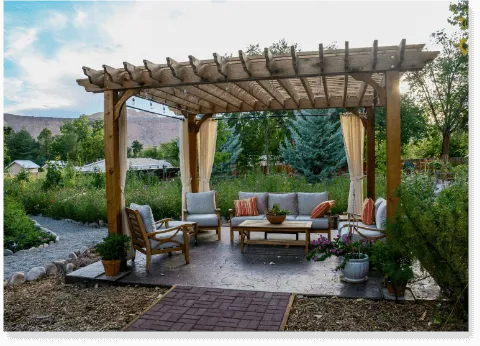
Native grass establishment—deep root systems binding soil, drought tolerance once established, buffalo grass or little bluestem, low maintenance living stabilization. We establish native grasses—appropriate species for Fort Worth, proper installation methods, roots providing excellent erosion control, attractive functional stabilization.
Groundcover plantings—spreading plants covering slopes, fragrant sumac or Asian jasmine, foliage protecting soil from rain impact, roots holding soil, complete coverage eliminating erosion. We plant groundcovers extensively—appropriate species for sun or shade, proper spacing, establishing coverage preventing erosion.
Shrub and tree planting—larger root systems, extensive soil binding, woody plants providing structure, strategic placement, permanent living stabilization. We incorporate woody plants—appropriate species, strategic locations, root systems stabilizing slopes, structural vegetation complementing groundcovers.
Hydroseeding for fast coverage—spraying seed and mulch mixture, rapid germination and establishment, economical large area treatment, temporary or permanent depending on seed mix. We hydroseed slopes—appropriate seed mixes, quick coverage, cost-effective large areas, establishing vegetation rapidly.
Erosion control blankets—biodegradable fabric protecting during establishment, holding seed and soil, natural fibers decomposing as plants establish, effective temporary protection. We use erosion blankets—appropriate for slopes steeper than 3:1, protecting until vegetation takes over, critical establishment phase protection.
Plant selection for Fort Worth slopes—heat and drought tolerance, clay soil adaptation, native or adapted species, appropriate selections surviving conditions. We select proven plants—species thriving on Fort Worth slopes, minimal maintenance once established, reliable performance, avoiding plants requiring constant care.
Maintenance during establishment—adequate watering first growing season, monitoring and supplemental planting, patience allowing root development, care ensuring success. We emphasize establishment care—critical first year, adequate moisture, monitoring, achieving successful stabilization through proper care.
Soil Bioengineering Techniques
Live staking methods—cutting living branches, inserting into slopes, rooting and growing, willow and other species, living structural stabilization. We use live stakes—appropriate species, proper installation techniques, living systems providing progressive increasing stabilization, effective natural approach.
Brush layering—alternating soil and brush layers on slopes, branches rooting and growing, creating living reinforced slope face, traditional effective technique. We incorporate brush layering—steep slopes, appropriate plant materials, creating living retaining structures, natural appearance.
Fascines (wattles)—bundles of live branches, placed in trenches across slopes, slowing water and sediment, rooting and establishing, living check dams. We use fascines—appropriate steep slopes, reducing runoff velocity, trapping sediment, establishing vegetation.
Live cribwalls—interlocking timbers filled with soil and planted, living structural walls, plants rooting through structure, combining structural and vegetative approaches. We design live cribwalls—appropriate applications, proper construction, attractive natural-appearing structures, progressive stabilization.
Coconut fiber logs—temporary soil holding, placed along contours, slowing water and holding soil, biodegrading as plants establish, effective temporary stabilization. We use coir logs—appropriate slopes, temporary protection during establishment, effective simple application.
Native plant materials—using locally adapted species, willow and other water-loving plants, species proven rooting from cuttings, appropriate Fort Worth bioengineering plants. We source appropriate materials—local adapted species, plants proven in techniques, successful bioengineering with Fort Worth-appropriate plants.
Structural Slope Protection
Rip-rap armor—large angular stone, interlocking naturally, protecting from severe erosion, channels and steep slopes, permanent heavy-duty protection. We design rip-rap—proper stone sizing for flow velocities, adequate depth and width, appropriate severe erosion situations, Fort Worth limestone or other stone.
Gabion baskets—rock-filled wire cages, flexible systems, retaining and protecting simultaneously, contemporary appearance, effective combined retention and protection. We use gabions—appropriate applications, proper installation, attractive contemporary solutions, effective severe slope protection.
Articulated concrete mats—interlocking concrete blocks on fabric, allowing flexibility, armoring severe slopes and channels, engineered protection, sometimes appropriate extreme situations. We specify mats—severe erosion problems, engineered solutions, permanent heavy protection, appropriate extreme cases.
Soil nailing for extreme slopes—reinforcing soil with steel bars, creating stable mass, near-vertical slopes possible, engineered approach for severe situations. We coordinate soil nailing—geotechnical engineering required, specialist installation, extreme slope solutions, severe problem situations.
Shotcrete slope stabilization—spraying concrete on slopes, structural facing, engineered approach, sometimes necessary extreme unstable slopes, last resort heavy solution. We coordinate shotcrete—engineering required, appropriate only severe situations, recognizing environmental impact and appearance limitations.
Mechanically stabilized earth—geogrid layers in compacted fill, creating stable slopes, engineering approach for new construction, building stable fill slopes. We design MSE slopes—new construction, proper materials and installation, engineered stable slopes, appropriate new development situations.
Drainage Management on Slopes
Surface water diversion—intercepting water above slopes, preventing flow down faces, swales and berms, diverting around problem areas. We design interception—capturing upslope water, routing around slopes, preventing erosion from concentrated flow, critical surface water management.
Downslope drainage channels—managing water flowing down slopes, armored channels, check dams reducing velocity, controlling flow preventing erosion. We design slope drainage—appropriate channel treatments, velocity reduction, preventing erosive flow, managing water safely down slopes.
Subsurface drainage—interceptor drains collecting groundwater, preventing seepage destabilizing slopes, French drains on slopes, managing subsurface water. We incorporate subsurface drainage—understanding seepage problems, proper drain placement, preventing saturation reducing stability.
Terracing for drainage—level areas intercepting water, terraced drainage, managing water at each level, preventing accumulation and concentrated flow. We design terraced drainage—comprehensive systems at each level, preventing water cascade down slopes, proper management throughout height.
Check dams reducing velocity—stone or timber structures, slowing runoff, energy dissipation, spacing based on slope and flow, preventing erosive velocities. We design check dams—proper spacing and construction, reducing flow energy, preventing channel cutting, effective erosion prevention.
Regrading to reduce slope—reducing slope angles through earthwork, creating gentler more stable slopes, sometimes necessary major intervention, permanent solution for severe slopes. We design regrading—appropriate severe situations, creating stable gentler slopes, substantial but permanent solution.
Erosion Control Materials and Installation
Erosion control fabric types—jute for short-term, coir (coconut) for longer lasting, straw blankets economical, synthetic permanent, appropriate selection for duration and application. We select fabrics—appropriate for slope steepness and duration needed, proper materials for situations, effective protection.
Proper installation techniques—starting at top of slope, overlapping properly, securing with staples or stakes, tight contact with soil, correct installation ensuring function. We specify proper installation—detailed techniques, adequate securing, preventing uplift and displacement, installation quality critical to performance.
Staple and stake spacing—adequate securing preventing movement, closer spacing on steeper slopes, proper penetration, secure attachment to slope. We detail securing—appropriate spacing patterns, adequate penetration depth, proper installation preventing failure.
Seam overlap requirements—adequate overlap between fabric sheets, preventing erosion at seams, proper installation detail, continuous protection. We specify overlaps—adequate dimensions, proper direction, preventing concentrated flow at seams.
Seed and mulch incorporation—hydroseeding over fabric, incorporating seed under edges, establishing vegetation through fabric, coordinated vegetative and fabric protection. We coordinate seeding—proper timing, appropriate seed under and over fabric, establishing vegetation while fabric protects.
Inspection and maintenance—monitoring after installation, repairing damaged areas, ensuring continued protection, maintenance until vegetation establishes. We emphasize monitoring—checking after storms, repairing quickly, maintaining protection until permanent vegetation established.
Terracing and Level Area Creation
Terrace design principles—adequate width for intended use, proper spacing between walls, structural independence of tiers, functional attractive results. We design terraces—based on intended use, appropriate widths, proper wall separation, creating usable beautiful spaces from slopes.
Wall height optimization—individual walls under engineering thresholds, multiple shorter walls versus single tall wall, economical practical approach. We optimize heights—keeping individual walls manageable, avoiding unnecessary engineering, economical attractive solutions.
Terrace planting design—appropriate plants for terraced conditions, attractive plantings between walls, softening structures, creating garden spaces. We design terrace plantings—appropriate for conditions, attractive gardens, terraces becoming beautiful landscaped features.
Access between levels—steps connecting terraces, proper rise and run, adequate width, safe comfortable access, functional circulation. We design terrace stairs—comfortable proportions, safe access, attractive integration, functional circulation between levels.
Drainage at each level—comprehensive drainage on every terrace, preventing water loading lower walls, proper outlets, coordinated systems. We design drainage comprehensively—each level independent, preventing cascade problems, protecting all walls and structures.
Slope Stabilization for Specific Situations
Creek and stream banks—erosion from water flow, undercutting threatening structures, rip-rap or vegetative stabilization, protecting banks from lateral erosion. We stabilize creek banks—appropriate techniques for flow velocities, protecting property from erosion, preventing progressive bank failure.
Lake and pond shorelines—wave action eroding banks, water level fluctuations, appropriate treatments for aquatic environments, protecting shorelines. We stabilize shorelines—appropriate techniques for water environments, protecting from wave action, attractive treatments.
Road and driveway cuts—slopes created by construction, drainage from pavement, high visibility requiring attractive treatments, functional aesthetic solutions. We stabilize cut slopes—appropriate for visibility, managing road drainage, attractive functional results.
Foundation proximity slopes—slopes threatening structures, requiring engineered approaches, protecting foundations, critical stabilization. We prioritize foundation protection—engineered solutions when necessary, protecting structures, comprehensive approach preventing damage.
Disturbed construction slopes—temporary or new slopes from construction, requiring immediate stabilization, preventing erosion during and after work, responsible construction practices. We address construction slopes—immediate stabilization, preventing sediment problems, responsible practices.
Permits Engineering and Regulations
When engineering required—steep slopes over certain angles, heights, loads, proximity to structures, regulated thresholds triggering requirements. We determine engineering needs—understanding regulations, coordinating professional engineers when required, proper professional involvement.
Erosion and sediment control permits—disturbing significant areas, construction activities, stormwater permits, regulatory compliance for soil disturbance. We handle permitting—understanding requirements, proper applications, compliant work, legal responsible stabilization.
Setback requirements—distance from property lines, easements, right-of-ways, regulations affecting placement, understanding restrictions. We verify setbacks—property surveys, understanding limitations, compliant placement, legal proper locations.
HOA approvals—many neighborhoods requiring architectural review, materials and approaches, visible slope treatments needing approval, covenant compliance. We handle HOA coordination—proper submittals, addressing concerns, obtaining required approvals.
City inspections—erosion control inspections, engineered work verification, regulatory compliance checking, coordinating inspections. We coordinate inspections—scheduling appropriately, ensuring compliant work, passing required inspections.
Maintenance and Monitoring
Initial monitoring critical—watching performance after installation, observing first storms, identifying problems early, immediate intervention if issues develop. We emphasize initial monitoring—critical period, catching problems immediately, adjusting as needed, ensuring successful stabilization.
Vegetation establishment care—adequate watering first season, monitoring growth, supplemental planting if needed, care ensuring living stabilization success. We provide establishment guidance—watering schedules, monitoring recommendations, ensuring vegetation succeeding.
Drainage system maintenance—keeping drains clear, removing debris, maintaining function, drainage critical long-term stability. We emphasize drainage maintenance—inspecting regularly, clearing as needed, maintaining water management, protecting stability.
Addressing problems promptly—small issues becoming major failures if ignored, immediate repair critical, monitoring and rapid response, preventing escalation. We stress prompt action—addressing concerns immediately, preventing small problems becoming catastrophic, rapid intervention.
Seasonal considerations—freeze-thaw affecting slopes, Fort Worth occasional freezes, summer drought stressing plants, seasonal impacts on stability. We consider seasonal factors—appropriate for Fort Worth, managing freeze and drought impacts, year-round stability approach.
Long-term adaptation—slopes evolving over time, plant succession, maintenance adjusting to changes, long-term management approach. We plan long-term—understanding evolution, adaptive management, ongoing care maintaining stability decades.
Ready to stabilize slopes on your Fort Worth property—preventing erosion and soil movement, protecting structures, creating usable spaces from hillsides, comprehensive solutions combining structural and vegetative approaches? Let's design slope stabilization specifically for Fort Worth conditions—handling our clay soil erosion, managing our intense rainfall, appropriate techniques for our climate, engineered approaches when needed, permanent solutions protecting your property long-term.
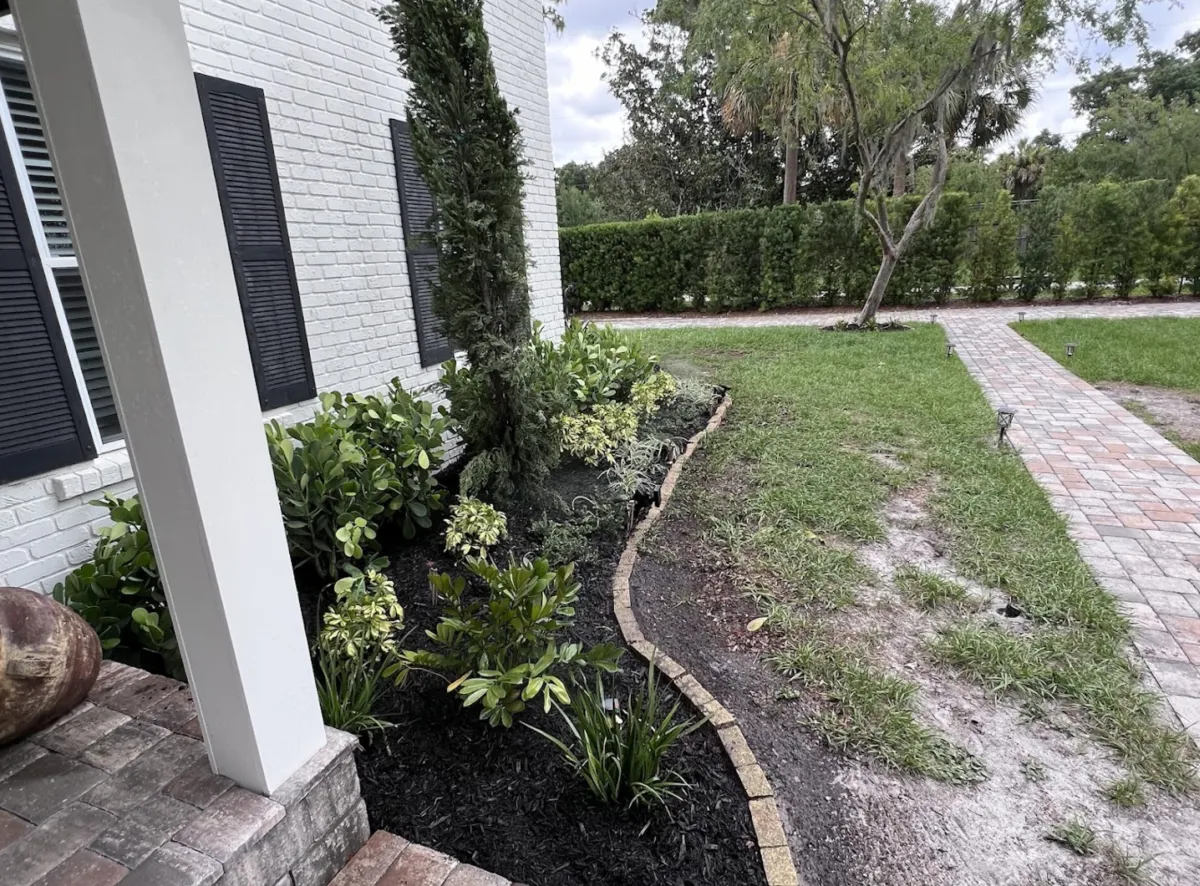

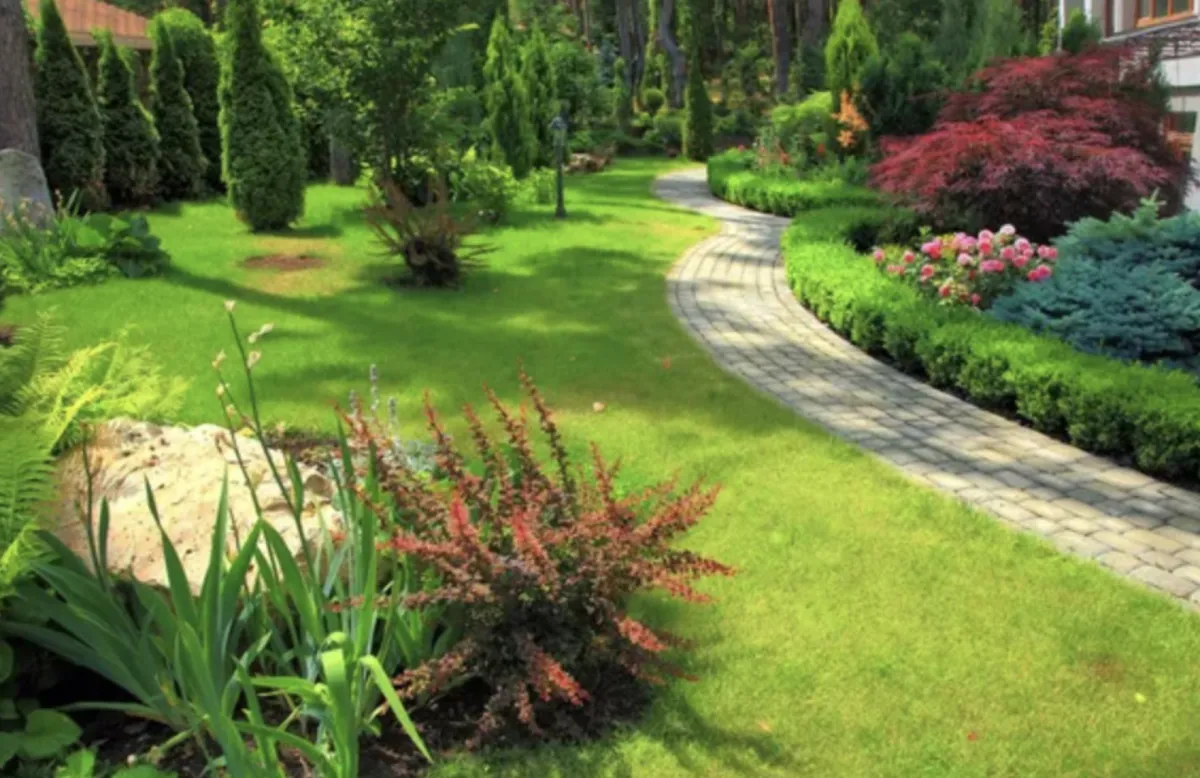
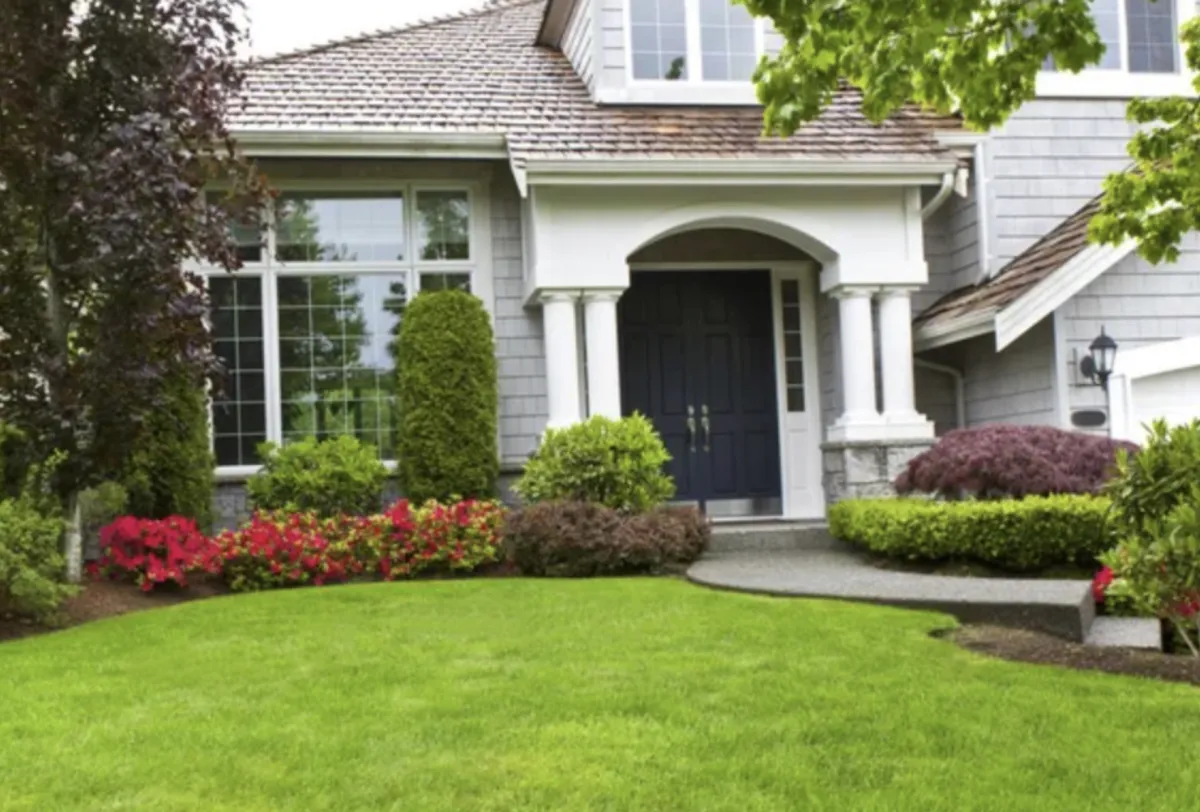
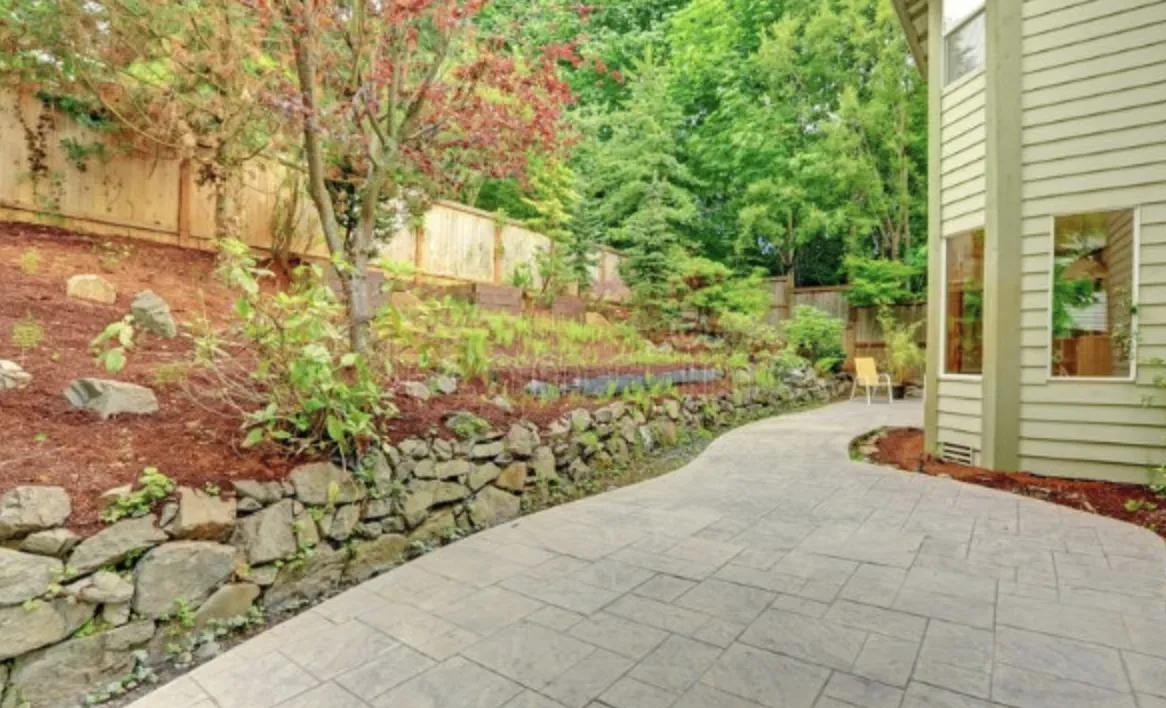

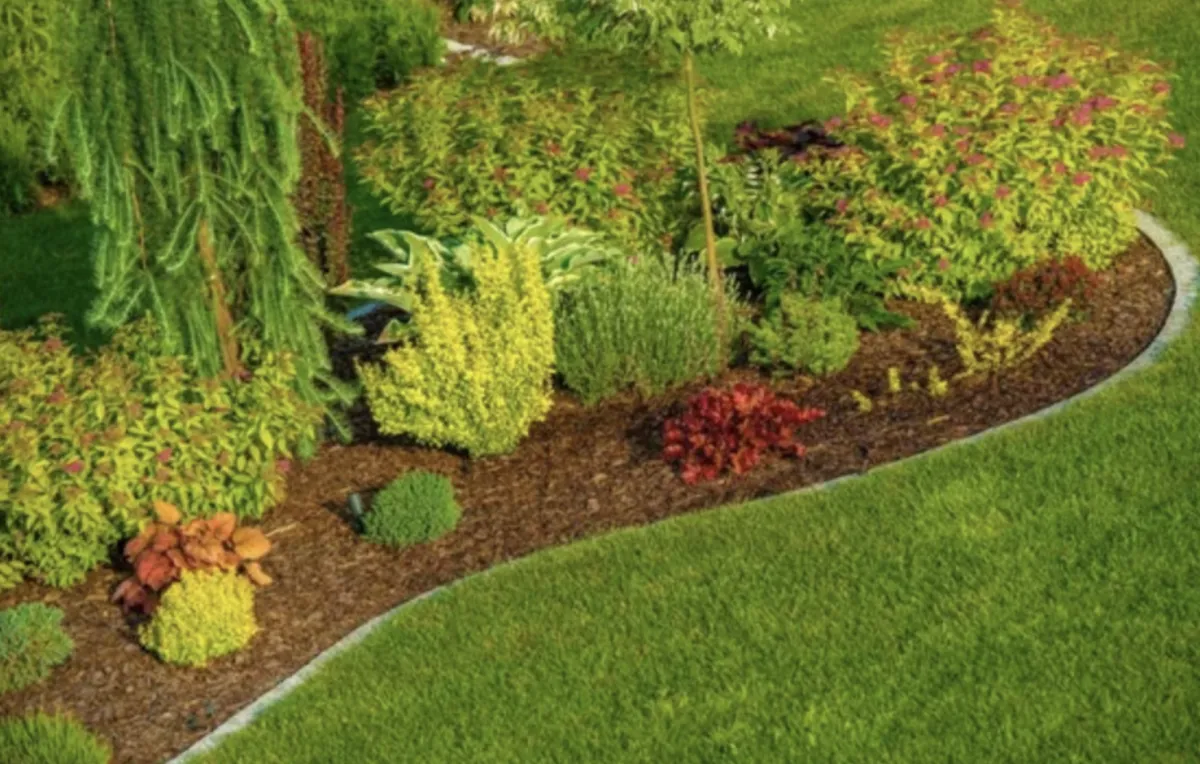

See What Our Customer Say About Us
Sarah M., Fort Worth, TX

“I can’t say enough good things about HF Landscape Design Fort Worth. They totally transformed our backyard into something out of a magazine — and they did it on time and within our budget. The team showed up early every day, cleaned up after themselves, and really listened to what we wanted. You can tell they actually care about the little details, not just getting the job done. Our neighbors keep stopping by asking who did the work — we tell everyone to call HF Landscape Design. Best decision we made for our home!”
Daniel R., Fort Worth, TX

“HF Landscape Design Fort Worth really blew us away. We had a plain front yard before, and now it looks like something you’d see in a design show. They helped pick the right plants for the Texas heat and even added lighting that makes the place glow at night. Super easy to talk to and very professional — they made the whole thing stress-free. We’d hire them again in a heartbeat.”
Megan & Tyler H., Fort Worth, TX

“Our backyard was just dirt and weeds before HF Landscape Design came in. Now it’s the spot where we spend every weekend with friends. They built a patio, added flower beds, and somehow made it all feel natural like it was always meant to be there. You can tell they love what they do — every detail was perfect. Highly recommend them to anyone in Fort Worth wanting a yard they’ll actually use.”
Get Professional Slope Stabilization
Stop dealing with erosion, dangerous slopes, or unusable areas. Get professional slope stabilization creating permanent solutions for Fort Worth properties.
Call (817) 580-3329 to schedule a slope stabilization consultation. We'll assess your slope conditions and design solutions preventing erosion while potentially creating usable outdoor space.
Service Areas: Fort Worth, Tanglewood, Ridglea Hills, River Crest, Westover Hills, Berkeley, Monticello, Mistletoe Heights, and surrounding communities.
Frequently Asked Questions
What is the average cost of landscape design?
Landscape design costs in Fort Worth typically range from $2,000 to $8,000 depending on property size—project complexity—level of detail required. Simple front yard designs for smaller properties might run $1,500 to $3,000. Comprehensive landscape plans for larger properties with detailed planting plans—hardscape designs—irrigation layouts—lighting plans usually cost $5,000 to $10,000 or more. We typically credit design fees toward installation if you proceed with us for the work. Design-only services cost more since we're not recouping fees through installation. Most clients in areas like Tanglewood or Westover Hills invest in detailed designs because their properties warrant professional planning. Newer neighborhoods with simpler yards might need less extensive design work.
What does it cost for a landscape design?
Design fees depend on project scope and what you need included. Basic conceptual designs showing general layout—plant groupings—hardscape locations run $1,500 to $3,000 for typical residential properties. Detailed construction-level plans with exact plant specifications—hardscape dimensions—grading plans—irrigation zone maps cost $4,000 to $8,000 or higher for complex projects. Commercial landscape design involves additional complexity and typically costs more. We discuss your specific needs during initial consultation and provide design fee quotes based on actual scope. Design fees get credited toward installation when you hire us for the work. Fort Worth properties with challenging conditions—significant slopes—drainage issues—often need more detailed planning which affects design costs.
What is the difference between a landscape architect and a landscape designer?
Landscape architects have formal education—state licensing—ability to stamp engineering drawings for permits. They handle complex projects requiring grading engineering—structural calculations—commercial site development—regulatory compliance. Landscape designers focus on plant selection—aesthetic layout—residential design without engineering components. In Fort Worth, landscape architects are required for certain commercial projects—retaining walls over specific heights—projects needing engineered drainage solutions. Residential projects usually work fine with landscape designers unless you've got significant slope issues—major grading needs—structures requiring engineering stamps. Landscape architects cost more but bring technical expertise for complex projects. Most residential landscapes in neighborhoods like Arlington Heights or Ridglea work well with landscape designers. Larger estates or properties with serious site challenges benefit from landscape architectural services.
Why is landscape design so expensive?
Professional landscape design involves considerable time—expertise—detailed planning work. Designers spend hours on site assessment—measuring—analyzing drainage and sun patterns—researching plant options for specific conditions. Creating scaled plans requires CAD software skills—design knowledge—understanding of Fort Worth's climate and soil conditions. Good designers prevent expensive installation mistakes—plant failures—drainage problems that cost far more to fix later. You're paying for years of experience knowing what works in North Texas clay soil—which plants survive July heat—how to design irrigation zones efficiently. Design fees also cover revisions—client meetings—coordination with contractors during installation. Cheap or free designs often mean cookie-cutter plans—inexperienced designers—or design costs hidden in inflated installation prices. Professional design upfront saves money long-term by getting things right the first time.
What is the rule of 3 in landscaping?
The rule of three suggests planting in odd-numbered groups—typically three plants—creates more natural and visually appealing arrangements than even numbers. Three plants or features create triangular compositions—visual interest—balance without formal symmetry. This applies to groupings of the same plant variety or repeating design elements throughout the landscape. In Fort Worth landscapes, you might see three crape myrtles anchoring a bed—three groupings of ornamental grasses—three boulders in a natural arrangement. The rule helps avoid the static look of paired plantings or single specimens. Works for plants of various sizes—repetition of colors—hardscape feature placement. Not a strict requirement but a helpful design principle creating more dynamic landscapes. We use the rule of three alongside other design principles—proper spacing—mature size consideration—Fort Worth-appropriate plant selection.
What is a realistic landscaping budget?
Realistic budgets for Fort Worth landscape projects typically start around $10,000 for basic front yard renovations and run $20,000 to $50,000 for complete front and backyard transformations with hardscaping. Simple refreshes—new plants—mulch—irrigation repairs might cost $5,000 to $8,000. Projects including patios—retaining walls—outdoor kitchens—extensive plantings easily reach $50,000 to $100,000 or more. Budget depends on property size—existing conditions—how much hardscape you want—plant material quality and maturity. Fort Worth's clay soil often requires additional drainage work affecting costs. Established neighborhoods like Monticello with mature landscapes might need less work than new construction in Walsh Ranch starting from dirt. Quality materials and experienced installation cost more upfront but last longer and perform better in our climate.
